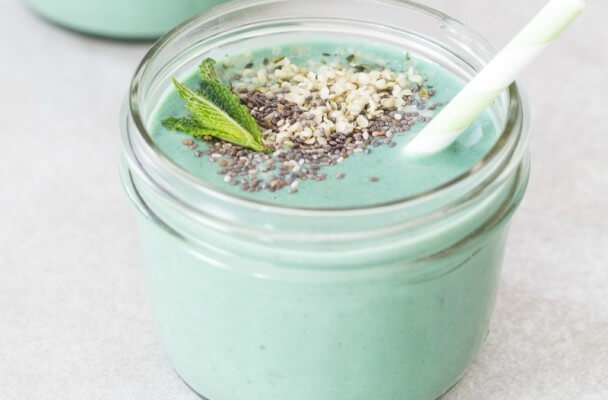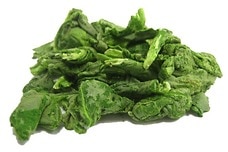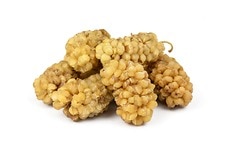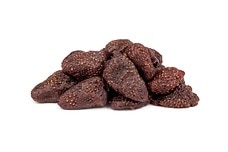Calcium-Rich Snack Foods
Everyone knows calcium is critically important for healthy bones and teeth, but did you know it also plays important roles in stabilizing essential proteins, regulating the contraction and relaxation of muscles, and managing the constriction and relaxation of blood vessels? IIn fact, calcium levels are so important, even a small decline in the calcium levels in the body’s blood and tissues causes the release of a hormone that simultaneously limits calcium’s elimination through urine, stimulates its release from bone tissue, and facilitates its absorption during digestion(Higdon, Drake, Delage, & Weaver, 2001).
In the body, almost all of the calcium you consume is stored in the bones and teeth. The remainder circulates through the blood to other tissues and organs where it performs essential tasks ranging from those mentioned above to the tasks of nerve and cell signaling (National Institutes of Health [NIH], 2013a).
How Much Calcium Do We Need?
Adult men and women from 19 to 50 years of age and kids from four to eight years of age need about 1,000 mg of calcium each day. From 51 to 70 years of age, men need about 1,000 mg a day while women need a little more – about 1,300 mg per day – to help prevent osteoporosis during menopause. Both men and women over 70 years of age need about 1,200 mg per day. Adolescents and teens from nine to 18 years of age need about 1,300 mg of calcium every day to support healthy bone development (NIH, 2013b).
One of the biggest risks of not getting enough calcium is the development of osteopenia (low bone mineral density) or the more serious condition, osteoporosis, both of which can significantly increase the risk of fractures (NIH, 2013b). Some studies have also indicated that calcium may help reduce the risks of certain cancers and may help provide some protection against heart disease. Other symptoms associated with low levels of calcium include numbness and tingling in the fingers, heart arrhythmias and even convulsions (NIH, 2013a).
Table 1: Recommended Dietary Allowances (RDAs) for Calcium (NIH, 2016b)
| Age | Male | Female | Pregnant | Lactating |
|---|---|---|---|---|
| 0-6 months* | 200 mg | 200 mg | ||
| 7-12 months* | 260 mg | 260 mg | ||
| 1-3 years | 700 mg | 700 mg | ||
| 4-8 years | 1,000 mg | 1,000 mg | ||
| 9-13 years | 1,300 mg | 1,300 mg | ||
| 14-18 years | 1,300 mg | 1,300 mg | 1,300 mg | 1,300 mg |
| 19-50 years | 1,000 mg | 1,000 mg | 1,000 mg | 1,000 mg |
| 51-70 years | 1,000 mg | 1,200 mg | ||
| 71+ years | 1,200 mg | 1,200 mg |
Am I Getting Enough Calcium?
Although many foods contain calcium, a report from the federal government (2009) found most people in the U.S. - about two-thirds – aren't getting nearly the amount they need to maintain optimal health. Deficiencies were greatest among girls and young women ages 14 to 50 years of age, although both genders appear to be consuming far less calcium than recommended on a daily basis (Bailey et al., 2010).
Although anyone can develop calcium deficiency, some people are more likely to consume less calcium than others. People who are lactose intolerant or sensitive to milk and milk products, women who are in menopause, and younger women who have unusually low levels of circulating estrogen are at special risk for calcium deficiency. Vegetarians and vegans are also more likely to have low levels of calcium compared to those who eat meat.
Foods High in Calcium
Milk and other dairy products are good sources of calcium, but if you're lactose intolerant or you simply don't like milk or milk products, don't despair: there are plenty of other non-dairy sources of the mineral that can help keep your calcium at optimal levels. Sardines and canned salmon, both with their bones retained, are excellent sources of calcium, and turnip greens, kale and Chinese cabbage are good vegan sources. Fortified bread and cereal products and fortified orange juice can also help boost your daily intake (NIH, 2013b).
Of course, if you're looking for an easy way to boost calcium levels, nuts and seeds are ideal. In fact, just one cup of almonds has about 380 mg of calcium – more than a cup of milk, which has just under 300 mg. A cup of Brazil nuts has about 213 mg of calcium, and a cup of pili nuts has 174 mg. Seeds are even more potent sources of calcium. Just a tablespoon of sesame seeds has 88 mg of calcium – try sprinkling some on a salad for a healthy crunch (Kandil, 2012).
Adding foods rich in vitamin D helps increase absorption of calcium in the digestive tract so you can get the most from the calcium-rich food you eat. On the other hand, oxalic acid and phytic acid found in vegetables, beans and whole grains can decrease calcium absorption, which is another reason why vegetarians and vegans are at greater risk for calcium deficiency.
The federal government's Dietary Guidelines for Americans recommends people get nutrients from food sources rather than relying on supplements (Office of Disease Prevention and Health Promotion, n.d.). Since nuts and seeds are great sources of not only calcium but other important minerals as well, adding them to your regular diet is an ideal way to supplement your nutritional needs naturally. For some ideas on how to add these foods to your regular regimen, check out the sections below for calcium-rich recipes and snack recommendations from our Health Nut and Registered Dietitian!
Calcium-Rich Recipes
Create your own confections to cull your cravings for the sweet or savory with these recipes for superbly scrumptious, calcium-laden snacks and meals.

Protein-Packed Detox Smoothie Recipe {vegan}
A true powerhouse of calcium, our detox smoothie supplies a whopping 74% of the Daily Value (DV) for calcium! A superb source for anyone, particularly those subscribing to a vegan diet.
Ingredients: Almond milk, frozen banana, spirulina, hemp protein powder (optional), fresh mint, chia seeds, hemp hearts.
Total Time: 5 minutes
| Yield: 2 servings

Matcha Green Tea Smoothie Recipe {gluten-free, vegan}
Another simple smoothie recipe, this delectable drink offers a healthy helping of calcium with 47% of the DV for the mineral. Treat yourself to this sweet savor today!
Ingredients: Almond milk, matcha green tea powder, hemp protein powder, almond flour, dried mulberries, pitted dates, flaxseed meal, ice cubes, stevia powder.
Total Time: 5 minutes
| Yield: 4 smoothies

Farro Vegetable Salad Recipe
It can be surprisingly difficult to meet your dietary needs when it comes to calcium, but this delectable salad supplies a hearty helping of the mineral with an abundance of other nutrients.
Ingredients: Organic farro, sun dried tomatoes, frozen corn (thawed), scallions, black olives, feta cheese, cherry tomatoes, shredded carrots, salt, fresh dill, fresh mint, extra virgin olive oil, balsamic vinegar.
Total Time: 1 hour
| Yield: 6 servings

Veggie Quinoa Casserole Recipe {gluten-free, vegan}
A delectable dinner made with more calcium than your average meal, this vegan casserole is ideal for fitting that elusive mineral into your daily diet!
Ingredients: Quinoa, extra firm tofu, bell peppers, cherry tomatoes, olive oil, paprika, cumin, oregano, thyme, salt.
Total Time: 35 minutes
| Yield: 4 - 5 servings
Recommended High-Calcium Snacks
When it comes to adding in calcium-rich foods, you most likely think of items like: milk, yogurt, and cheese as some of go-to sources. While dairy foods are rich in calcium, there are also plenty of other foods that deliver calcium to boost your daily intake.
On food labels, the amount of calcium in the food is referenced by the % Daily Value (DV), which is a set of recommendations for key nutrients based on a 2,000 calorie daily diet, the % DV for calcium is 1000 milligrams, so if a food has 18% of the DV that would have about 180 milligrams of calcium per serving. Similarly, 30% of the DV is 3000 milligrams of calcium per serving. Remember, if you have two servings, all of the nutrition fact data doubles!
Healthy Eating
- Healthy Highlights
- 5 Uses for Cacao Powder
- 5 Ways to Eat Farro
- 6 Best Gluten-Free Foods
- Alcohol and the Body
- Almond Flour Recipes
- Anti-Aging Superfoods
- Beat the Afternoon Slump
- Benefits of a Plant-Based Diet
- Benefits of Baobab
- Benefits of Cashews
- Benefits of Coconut Oil for Hair
- Benefits of Coconuts
- Benefits of Dates
- Benefits of Fenugreek
- Benefits of Garcinia Cambogia
- Benefits of Goji Berries
- Benefits of Kale Chips
- Benefits of Monk Fruit Sweetener
- Benefits of Peanuts
- Benefits of Pecans
- Benefits of Pistachios
- Benefits of Pumpkin Seeds
- Benefits of Spelt Flour
- Benefits of Steel Cut Oats
- Benefits of Sunflower Seeds
- Benefits of Tiger Nuts
- Benefits of Turmeric
- Benefits of Walnuts
- Benefits of Wheatgrass
- Best Food Fads
- Cacao vs Cocoa
- Caffeine-Free Energy Foods
- Chocolate That's Good for You
- Diet vs. Exercise
- Fat Burning Foods
- Food Myths Debunked
- Foods for Bone Density
- Foods for Colon Health
- Foods for Healthy Hair
- Foods for Healthy Skin
- Foods to Help Sleep
- Foods to Reduce Stress
- Green Tea Benefits
- Healthy Baking Flours
- Heart Healthy Habits
- High Protein Health Risks
- How to Boost Your Metabolism
- How to Lose Weight While Aging
- How to Throw a Vegan BBQ
- Kaniwa vs Quinoa
- Little Health Foods
- Low-Carb: Fad or Friend?
- Making Healthier Desserts
- Mediterranean Diet Meal Plan
- Natural Beauty Products
- Nuts for Weight Loss
- Preparing Vegan Meals
- Preventing Muscle Degeneration
- Rare Superfoods
- Reduce Sugar Intake
- Save Time By Going Vegan
- Smarter Snack Swaps
- Smoothie Ingredients
- Soy Protein vs Whey Protein
- Starting a Plant-Based Diet
- Steel Cut vs Rolled Oats
- Sugar Substitutes
- Vegan Proteins
- Vegan Substitutions for Fall Recipes
- Why Go Vegan
- Healthy Meals
- Healthy Recipes
- Sports Nutrition
- Nutrition and Special Diets
- 21 Day Fix
- 5 Popular Diet Similarities
- Alkaline Diet
- Anti-Inflammatory Diet
- Calorie Counting
- Carb Cycling Diet
- Celiac Disease
- Cholesterol
- Clean Eating
- Crohn's Disease
- DASH Diet
- Detox Diet
- Diabetes
- Diabetes Diet
- Diet Pill Dangers
- Fat Burning Foods
- Gluten-free Diet
- Glycemic Index
- Heart Health
- High Blood Pressure Diet
- High Fiber Foods
- How to Eat Healthy
- How to Lower Blood Pressure
- Hypertension
- IBS Diet
- Ketogenic Diet
- Liquid Diet
- Low GI Foods
- Low-Carb Diet and Foods
- Low-Fat High-Carb Diet
- Mediterranean Diet
- Mediterranean Diet Foods
- Military Diet
- Nutrition Labels Explained
- Paleo Diet
- Raw Food Diet
- Superfoods
- Sustainable Weight Loss
- Thrive Diet
- Vegan Diet
- Vegetarian Diet
- Weight Loss Shakes
- Whole30
- Vitamins, Minerals & Nutrients






